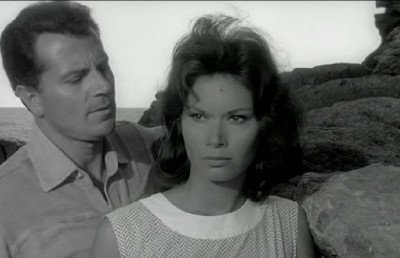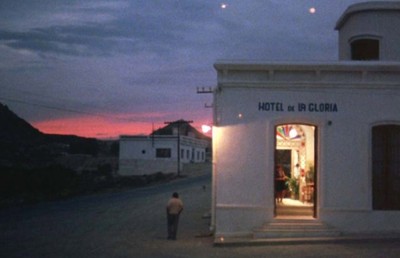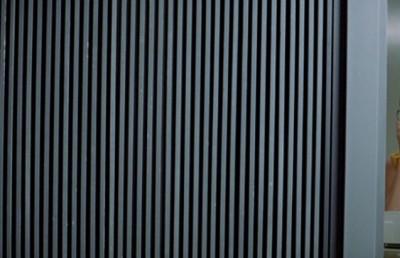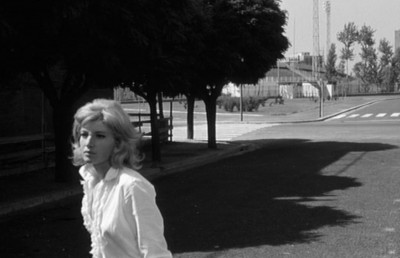Michelangelo Antonioni and the “Reality” of the Modern
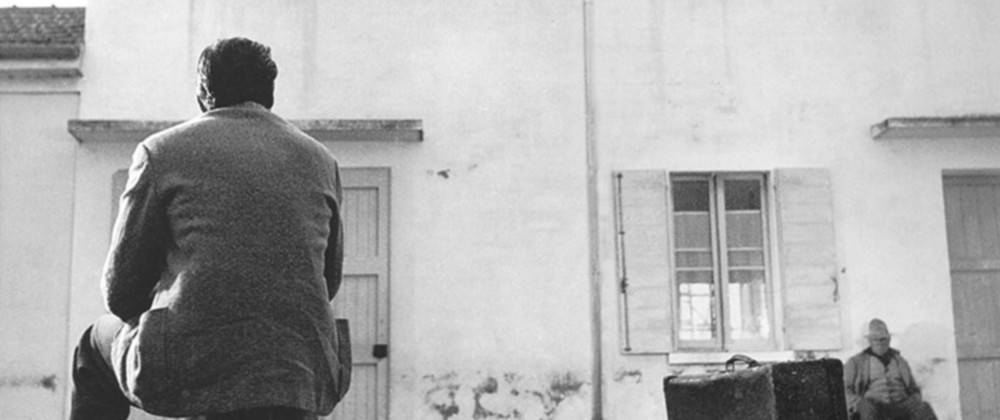
The concept of the Modern obtains two distinct yet related definitions. The first definition is typically the most common one and is broadly used to suggest the present day. The second definition borrows from the first, but pertains more specifically to social and cultural movements that aim to break with and modify classical and traditional notions of cohesion, progress, and structures. Roger A. Salerno suggested that the Modern can be broken down into either Modernity or Modernism, the first referring to the social constructs that surround a certain “way of life,” and the latter referring to the cultural movement that arises from these social constructs. [1] While this differentiation is helpful, it is also insufficient. For example, Antonioni’s films can be found in relation to Modernism and Modernity alike. What makes up the elements of Modernity in the social structure? And what are the elements of Modernism in the arts? Eugene Lunn narrowed down the definition into four unifying aspects common to most modernist aesthetic methods: Self-Awareness; Simultaneity or Juxtaposition; Ambiguity; and Dehumanization of the Integrated Individual Subject or Personality. [2] Lunn’s four aspects are very closely interrelated: not one aspect appears alone; each aspect is always accompanied by the other three. Yet, Lunn’s four aspects are in no way sufficient to explain the complex dynamics of the Modern. The Modern (along with Modernity and Modernism alike) and its aesthetic embodiments are discursively constructed through a variety of competing forces each trying to make sense of other discursive constructs. They are not by any means concepts that make sense in themselves. Rather, they are only coherent by their comparison to other concepts within a discursive framework.
Clearly the concept of the Modern is multifaceted and cannot be simplified to a short list of characteristics. Accordingly, anything that is produced in the Modern will also share this complexity. Conclusively, Solarno’s and Lunn’s approaches need to be combined. Using Michelangelo Antonioni’s Il Grido (1957), L’Avventura (1960) and L’Eclisse (1962) as enunciations of the intricacies of the Modern, this essay will explore both Lunn’s four aspects of modernist aesthetics and Salerno’s division of the Modern into Modernism and Modernity.
Self-Awareness, Simultaneity-Juxtaposition
Because of the circular patterns that make up the narrative structures, Antonioni’s films are both self-aware, as well as containing elements of simultaneity. For example, in Il Grido we follow Aldo from the tower (where we first meet him), all the way to the huts on the beach (towards the end of the film), and back to the tower. Already in the complete structure of the narrative there appears a circular pattern. However, Antonioni also repeats this notion throughout the shorter episodes in the film. Within each episode there is the potential for Aldo to fall in love with four different women. Within every one of these storylines there is a repetition of the narrative structure, as well as the themes of isolation, emotionlessness, depression, modernization – ruralism versus urbanism, or nature versus industrialization – and sexuality.
With Irma, Aldo first encounters separation from his traditional expectations of a family life. In this encounter old traditions seize to exist. Aldo’s and Irma’s relationship is anything but traditional, it is an adulterous relationship. Irma’s decision to end their relationship results in Aldo’s outrage at Irma in front of the community. Aldo loses control of his emotions because he realizes that his reality is not as stable as he originally thought. Beginning to feel isolated within his home and community, Aldo decides to leave on a search for a more stable life. Alternatively, this decision can also be read as Aldo simply running away from his problems. Regardless of what Aldo’s reasoning is, the themes of separation, isolation, emotionlessness (Irma’s decision to separate from Aldo at a time when their relationship is supposed to become acceptable, and Aldo’s decision to leave his emotions and try to find a place where he does not have to think about them), and modernization (Irma’s and Aldo’s adulterated relationship) are already put in place.
Chronologically, we then meet Elvira who also feels isolated. We get the sense that Elvira feels lonely and depressed. We begin to think that Aldo can become like her, that his feelings of isolation are changing into depression. Furthermore, in Elvira we also find that the likelihood of family stability is questionable. In addition to this, Antonioni relates these problems to the modernization of the Po Valley where these characters live. Modernization causes the old traditions to become invisible or indistinct. Aldo and Elvira are seen as two individuals caught between an old traditional quest for love and a new reality that makes this quest unattainable.
Following Aldo’s visit to Elvira, the same themes of independence over one’s life are explored in Virginia. However in Virginia we find a character that willingly modernizes her life, but similarly, loses her freedom in order to live her life as she pleases. Though she is seemingly more autonomous, Virginia is also less free to leave the gas station. In an ironic manner, Antonioni relates Virginia’s attachment to the gas station with the removal of the tree where her old farm used to be. Virginia’s seemingly routine reaction of frustration with her father’s protest of the removal of the tree, reveals her attitude towards her reality. She tells Aldo that she wants to travel beyond the mountains, yet she chooses to own the gas station where she finds there is more security.
Finally, Aldo ends his quest northward after meeting Andreina, a prostitute who is the most willing of all of the characters to accept the changes surrounding the modernization of Po Valley. The only thing that matters to Andreina is to make sure that by the end of the day she will have food to eat. Her willingness to sell her body for sex reveals that she has no need to search for love, in the traditional sense that all of the other characters search for. She may even be described as someone who is void of emotions. Her relation to sex rounds up the themes of emotionlessness and sexual impulses we have seen in relation to all of the other women. While the rest of the women treat sex as an expression of romance, Andreina treats sex as a commodity. In Andreina sex reaches an undesired sense of mechanization. This is what has occurred to the environment, due to the modernization of Po Valley.
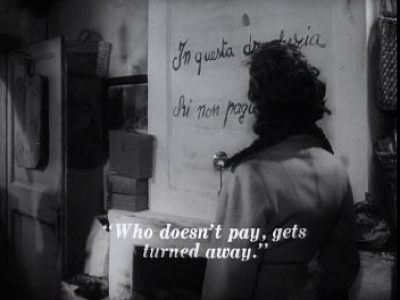
Structurally, we can see in these examples how elements of simultaneity are presented in the same instances where circular patterns can also be found. Aldo’s travels across the Po Valley brings him to three situations where, within each episode, a woman character is used to reveal the dynamics of the themes of isolation, loneliness, modernization, and romance. The result is a juxtaposition of the recurring situations found in unifying themes as well as the use of parallel plot lines – the potentialities for romance between Aldo, and Irma, Elvira, Virginia or Andreina accordingly. As viewers we are made aware of the cyclical patterns that are being used. Through the circular patterns and the juxtaposition of these unifying themes and parallel plots, these two aspects of Lunn’s definition for modernist arts arise in Il Grido.
Ambiguity, Dehumanization: Realizing Modernity
The most notable instances of ambiguity, Lunn’s third Modern aesthetic, occur in the endings of Il Grido, L’Eclisse and L’Avventura, where we are uncertain of the characters’ intentions. Did Aldo, in Il Grido, commit suicide or was he so overwhelmed with uncertainty that he lost his balance and fell? Did Claudia feel forgiveness in L’Avventura? Was she consenting Sandro, or both? And similarly, why didn’t Vittoria and Piero meet at the end of L’Eclisse? Were they both aware that they were lying to each other, or did they both coincidently remember that they had other prior engagements to attend? Antonioni even leaves room for ambiguity about his intentions behind the films: Are they about moral decay? A critique of the upper class? An analysis of technological impact on the human mind? An environmental outcry about the effects of industrialization on the environment? The list can go on. Conversely, the films are about all of these issues. Definably, Antonioni’s films are an exploration of ambiguity using an assortment of ironies surrounding modern life and art.
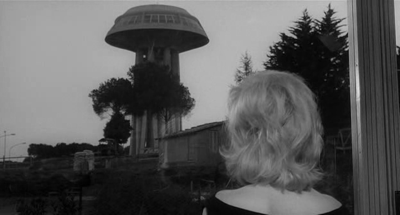
One of the reasons why there is so much ambiguity in Antonioni’s films is due to his unconventional use of the characterization. Antonioni does not explore the reasons why his characters behave the way they do. Instead of expanding the characters’ intentions through the cause-and-effect approach of conventional narrative cinema, Antonioni uses his characters as cinematic devices in order to express his personal philosophical reflections on the realities surrounding modernity. Consequently, Antonioni mystifies his characters; or using Lunn’s terminology, he dehumanizes them.
To further illustrate Antonioni’s dehumanization, I will turn to Walter Benjamin’s essay The Work of Art In the Age of Mechanical Reproduction. In this essay Benjamin argued that cinema obtained a power to “democratize” the process of art-making by creating an “immediate reality” where individuals can immerse themselves within a more communal form of social structure [3]. This was a celebration of technology as well as an approval of cinema as an art. Benjamin identified cinema as “an orchid in the land of technology” [4]. As a filmmaker, Antonioni asserts Benjamin’s proclamations, yet instead of exploring the technological environment by means of the camera, Antonioni implores the exploration process itself thereby exploring the technological process behind the production of a film. Where Benjamin differentiated cinema from other technologies, Antonioni differentiates cinematic techniques from themselves. Antonioni regards each and every aspect of the cinematic language as an orchid in itself – cinema is capturing cinema; a representation of itself, a cinema for the sake of cinema. Most concisely, the techniques of cinema themselves are the subjects of Antonioni’s films. Furthermore, not only does Antonioni show the technological environment of cinema, he also demonstrates the film’s self-awareness by showing the technological environment in Italy. By including the technological environment of Italy as part of the mise-en-scène, Antonioni makes us more aware of technology and techniques as contents, thereby informing us of the manipulative presence of the techniques of cinema that are used in the form of the film.
In relation to this, dehumanization of the subject or personality is also exemplified in Antonioni’s frequent employment of characters suffering from loneliness and emotional isolation. Antonioni uses these characters ambiguously in order to convey a type of feeling or attitude that surrounds modern society, while at the same time treating them as cinematic devices. The characters are dehumanized because they become one aspect of the film’s form. They belong to a film that is definably a technological medium. The characters are stripped of human qualities because they are treated as a part of a technology.
When Antonioni says: “I feel the need to express reality in terms that are not completely realistic,” [5] he is partly transforming Benjamin’s perception of the cinema as a mirroring of reality, and is partly revealing his dehumanization of the subject-matter of his films. For Antonioni cinema is not a tool that documents the world with ethnographic or anthropological tendencies such as those of colonial cinema [6]. In Antonioni’s approach, the techniques of ethnographic and anthropologic cinema are transformed to a position whereby they become the subjects of the films themselves. Antonionian cinema is used as a tool that documents the logics (or techniques) of cinema. Not only does Antonioni dehumanize the characters, he also dehumanizes the classical sense of capturing the subject “realistically”.
For example, in L’Eclisse, colonial ethnography is a central thematic concern. From the representation of African and colonial customs at Marta’s apartment, to the representation of the customs at the Borsa (stock market exchange), Antonioni re-views the themes of fragmented individuals and cultures in relation to ethnographic logics. As Kevin Moore argues, “[Vittoria] dances her way into a bedroom muralled by a panorama of Lake Naivasha in Nairobi, and Antonioni shoots the sequence as though she were stepping into a picture, going through the looking glass into a foreign world” [7]. Moore points out the way in which Antonioni is representing Vittoria as an outsider. Vittoria does not belong (nor does she want to belong) to any specific group. She is a visitor, an alien, or as Moore suggests, a character on the “quest for difference” [8]. The same occurs to Vittoria when she visits the Borsa. The yelling and movement surrounding the center of the room is shot as if it were a ritual. Characters such as Vittoria’s Mother and Piero are portrayed as individuals who take part in this ritual. Vittoria’s mother goes directly to the same spot against the rail, and Piero is almost always either running from the phone booth to the center of the room and back. Whether there is a ‘good day’ or a ‘bad day’ at the Borsa, almost everyone’s reactions are the same. Either most individuals in the Borsa are happy or most are upset. Everyone involved reacts as though they all belong to the same pulse.
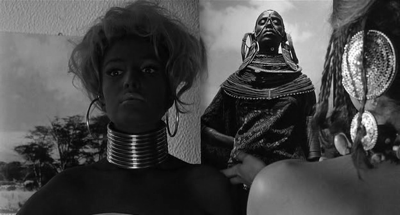
The scenes at the Borsa can be seen as instances of anthropologic cinema, where an observation of humans’ behavior in their own cultural environment occurs. Vittoria herself enters the Borsa hall as an outsider exploring the room. Antonioni situates Vittoria on one side of the columns or the gates that separate the different spaces in the Borsa, further exemplifying her outsider presence in the scene. If we take it to believe that ethnographic and anthropologic perceptions are traditional, and therefore belong to a classical sense of capturing the real, then Antonioni’s treatment of these perceptions as subject-matter dehumanizes them. Furthermore, the fact that Antonioni likens the characters to these methods of perceptions, the inscription of a loss of identity in them – Vittoria is a translator and is searching for a new life; Marta is an immigrant from Kenya and is indirectly discussing the loss of her identity; and Piero works at the Borsa which constantly fluctuates his financial identity – is another way by which Antonioni dehumanizes his human characters.
Antonioni furthermore implies the dehumanization of the subject matter in the ending sequence, where, for over seven minutes, the subjects simply disappear. Instead, what follows is a series of incoherent shots of buildings and human bodies that have been seen throughout the film serving as mise-en-scènes. The expectancy of Vittoria and Piero to show up at the corner at the time designated leaves us lingering to find out what will happen when they meet. Instead, neither one of them show up. But the film continues, signifying that Vittoria and Piero were only devices used by Antonioni. Their lives are of no importance. What is important is that their lives are incomplete. The end of the film resonates with an existential sense of ‘not-belonging’. What happens to Vittoria and Piero because they did not meet does not interest Antonioni. The fact that they did not meet tells more about his intentions. Their rendez-vous serves the purpose of not occurring. This resonates the idea that these characters are alienated even from each other. Antonioni further presents this by alienating our memories of Vittoria and Piero into the cinematic space that encompasses the final sequence.
The harrowing conclusion to L’Eclisse.
Fractured Bodies Fracturing Forms
Thus far in L’Eclisse, Antonioni has incorporated elements of Lunn’s self-awareness (reflexivity and simultaneity) between different characters and situations, as well as, ambiguity and the dehumanization of the integrated subjects. But Antonioni’s input does not end here. Antonioni furthermore represents these elements formally by the way he frames the human body throughout the film. Antonioni frequently shoots only sections of the characters’ body. Unlike the framing of classical-narrative cinema, Antonioni intuitively frames a hand or a leg off-center. Here the body belongs to the mise-en-scène just as much as a chair or a wall does. The resulting fragmented body parts are seemingly dissolved into other similarly floating fragmentary objects in, what can be referred to as, an Antonionian cinematic landscape. This notion of breaking down our perception of the human body is not only a break down of ethnographic logics, but also an imploration of the logics of framing in classical narrative.
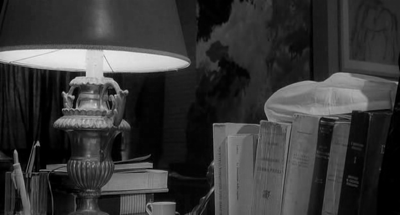
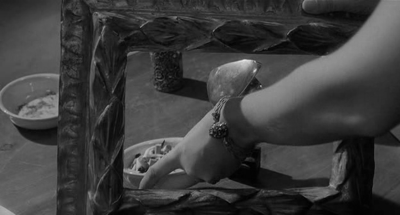
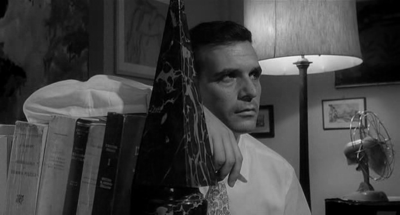
Overall, Antonioni makes use of cinema’s numerous contextual discursive layers in order to create an intertextual language about cinema. With this, not only does Antonioni create a layer of self-awareness, he also dehumanizes the subject-matter. Instead of cinema as ‘an orchid in the land of technology,’ it is cinema showing the land of technology in an orchid. In other words, the notion of reality is represented as a cinematic device. Not only do the films show the technological modernization of the landscapes in Italy, these representations of reality are conceived of as expressions of a cinematic language. Reality is found in the mediated environment of cinema. It is a cinematic reality. When Antonioni says “I feel the need to express reality in terms that are not completely realistic,” he is simply claiming that cinema creates a certain type of reality. It is not the camera’s vision inside a world; it is a world inside the camera.
Antonioni uses socio-political realities of colonialism and the Borsa as devices in the film. More importantly, Antonioni is representing these subjects in a way that transforms conventional uses of cinema. Antonioni stirs away from making any clear distinctions between the “real” world that is external to the film and the world as it is depicted in the film. As Kevin Moore writes:
[Antonioni’s films] resist the easy identification forged between viewer and viewed, audience and character, observer and object-subjectivity, upon which the classical Hollywood cinema depends. This methodological resistance situates the viewer in a nonvoyeuristic or objective position where reference is intentionally underdetermined.…Antonioni is out to explode or blow up all pat interpretive schemes (beliefs) regarding romance and reality by embarking upon cinematographic investigations of our perceptions of emotional perception. [9]
The non-traditional framing of the subjects transforms our understanding of what “subject” is. More specifically, this transformation reassesses the relations between subject as content and subject as form. In Antonioni, subject can be seen as both physical – elements that have a “physical presence” in the film (i.e. characters’ physical bodies, buildings’ physical spaces) – as well as socially and culturally discursive – elements that grow out of socio-cultural practices (i.e. colonial voyeurism, alienation). Furthermore, Antonioni uses cinema and its ability to capture the “real” world, while at the same time also capturing the norms of visual language constructed through cinematic practices.
For example, in L’Avventura the norms of cinema suggest that Anna will eventually be found either dead or missing. Instead, Antonioni does not determine anything of such sort. Anna’s disappearance is left as ambiguous from the moment it occurs in the film until the end of the film. Antonioni decontextualizes the narrative by leaving it open-ended, by not fully involving the audience in the search for Anna, and by not determining the motivations behind the characters’ behaviour. The audience’s expectation is based on the conventions used in other films. Antonioni uses the conventions established through a majority of films as devices that he then strips to their bare essence.
To illustrate Antonioni’s use of film norms as a discursive practice, which he then manipulates in his films, let us examine some of the more popular interpretations. Of the many reflections made about Antonioni’s films, in regards to Antonioni’s use of characters, there have been mainly two camps of interpretations. There are those who believe that Antonioni’s use of the mise-en-scène is to represent the inner psyche of the characters; and there are those who have formed an understanding of the characters based on their interaction with each other. For example, Rifkin analyzes Antonioni’s representation of the characters psyche in Il Grido through his use of the mise-en-scene:
Antonioni’s perspective on man and nature begins to surface more overtly in Il Grido…Antonioni repeatedly depicts Aldo against the flat, austere landscape to manifest his protagonist’s existential malaise. A thematic current running through the film is the eclipse of nature in the modern world, analogous to Aldo’s own feelings of emotional obsolescence once he leaves Irma and his home in Goriano. [10]
The representation of Aldo’s inner psyche is represented through the empty landscape that surrounds him. He is one with his surroundings.
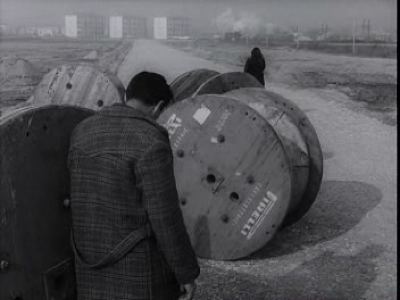
On the other hand, in his discussion about the presentation of emptiness in L’Avventura Harry Trosman argues that “sexuality is used as an antidote to despair and a way of dealing with loss, humiliation, anxiety, or boredom. Sandro quickly establishes a tie with Claudia rather than allowing himself to mourn the disappearance of Anna.” [11] Trosman concentrates on how the characters respond to situations by making psychologically logical decisions.
The truth is that both views are correct. Antonioni acknowledges both of these interpretations in his films. Rifkin is correct to interpret that the landscape in Il Grido represents Aldo’s inner ‘existential malaise’, as is Trosman when he interprets that the characters in L’Avventura use sexuality as a way of dealing with their unfulfilled lives. That is because Antonioni integrates both of these interpretations simultaneously. But this is only one of the ways in which Antonioni contextualizes the different interpretations that can potentially surround a film. As was mentioned earlier, there are many ways in which Antonioni contextualizes cinema’s norms.
Ultimately, a different interpretation arises. In this interpretation, the films begin to pertain to the realist versus idealist dichotomy that is often discussed in relation to the modernist notion of utopianism. This dichotomy is at the core of Antonioni’s films. The theme of utopianism can be found in all three of the films that are being discussed in this essay, but are also found in many of Antonioni’s other films. In Il Grido, Aldo is searching for utopian ideals but everywhere he travels resembles more of a dystopian reality. Similarly in L’Avventura, utopian idealism is portrayed as eroticism, while a dystopian reality is portrayed as the alienation due to modernized culture. And, in L’Eclisse, a utopian sense of belonging to a community is juxtaposed with a dystopian sense of isolation and loneliness. The modernist notion of utopianism can be found in Antonioni’s presentation of a dystopian reality. Or as Kevin Moore writes in regards to alienation in Antonioni’s films:
To be alienated in an Antonioni film is to be resentfully situated in an overlyindustrialized, capital-intensive world that fails to provide a nurturing environment in which the emotions might flourish. The chief difficulty in criticism’s near uniform application of this negative notion of alienation, however, is that it obscures a utopian gesture implicit in it. Although it is true that disconnection and its chief effects, loneliness and isolation, are thematically relevant to Antonioni’s cinema, the alienated self’s melancholic search for its lost ideal world tells only half the story. The other half is history, or the historical self’s search for an accommodation with a world it has itself produced. Rather than an end in itself, alienation, the effect of de-identification and non-correspondence, is the beginning of a process which, ideally, replaces the self back into a world of its own devising and into a community of like-minded others as well. [12]
Moore explains that ideality can be found in the sub-texts of Antonioni’s films. Alienation is presented as a negative form of reality, a reality that is far from being utopian. By illustrating a dystopian reality, Antonioni hopes to inscribe utopian ideals that are opposing the ones that are seen in his films.
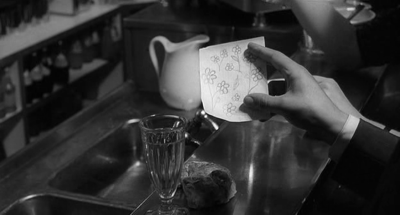
Modernity and its Modernisms
In a statement made at a press conference in Cannes, Antonioni discussed his motives and considerations in the making of L’Avventura. In this statement, Antonioni suggested that the “ever-increasing split between moral man and scientific man [leads to the prevalence of eroticism as] a symptom of the emotional sickness of our time” [13]. Antonioni relates the issues that he deals with in L’Avventura with the modern social construct. For Antonioni, liberalism is discussed in its relation to alienation due to its nature of misplacing the previous moral mindset for the unknown realms of the scientific mindset. As a result, those individuals who find themselves alienated due to the split between morals (i.e. ideals) and science (i.e. reality or a constraint to follow one ideality) are only able to express themselves through sexual means. The statement was Antonioni’s attempt at clarifying his view that the film was a search for a utopian idealism. But how does Antonioni portray this theme in the formal scheme of the film? Hamish Ford provides a starting point for the response:
While L’Avventura is a kind of road movie, the classical ideals of action as means to successful and morally unambiguous subjective mastery and bringing about of narrative events become eclipsed in this “adventure” by the radically foregrounded power of temporal and spatial affectivity. [14]
In all three films discussed in this essay, Antonioni begins by taking the conventional approach to narrative filmmaking – the use of character-driven cause-and-effect devices in order to formulate moral conclusions – and makes them part of the form of his films. Where normally these devices would be considered the content of the film, in L’Avventura these devices are considered aspects of the form of the film. Character plots are unresolved, characters are used as props within a mise-en-scène, Italy’s landscapes and their cultural meanings are diminished to serve as formal aesthetics of the film. The films at the end do not obtain any conclusive moral messages that are not ambiguous. As in modernist paintings such as those of Piet Mondrian or Jackson Pollock, the content of Antonioni’s films are so abstract that they risk obscurity. The films are about form as content. That is, both form being used entirely as content, as well as an integration of content as form. Working under the guise of the modernist idiom ‘l’art pour l’art’, Antonioni’s films are attempts at creating a cinema that explores its formal artistic capacities, and that alone. But more than this, these explorations also serve as enunciations of modern aesthetics and concerns caught within a modernizing and modernist world.
Anna, the “protagonist” in L’Avventura, is an illustration of both content as form, as well as, modern concerns. We are first introduced to her through an argument that she is having with her father. We are made aware that she is having a communication problem with her father, whom she lives with. We are also made aware that her father is a retired diplomat and that he is very wealthy. Also, we understand that she is having problems with a romantic relationship specifically regarding the topic of marriage. The film continues with Anna and her friend Claudia traveling to Sandro’s home. Upon arrival Anna confides her emotions to Claudia about her situation with Sandro:
“It’s awful to be apart, you know. It really is, believe me. And it’s hard to make it work when one person’s here…the other far off somewhere. But…it’s also convenient. Because then at least you can think whatever you want, however you please –if you know what I mean. But instead when…when someone’s right there, right there in front of you, everything’s right there, do you understand?”
Anna is confused about what she wants from her relationship with Sandro. She further complicates her problems by pursuing sexual activity with Sandro, immediately after she confides her emotions with Claudia. A few scenes later, Anna finally confronts her situation directly with Sandro during their discussion on the island. She confronts her desires to be alone and free while at the same time explaining that the thought of losing Sandro makes her want to die. This scene ends with a dissolving shot of Anna (the back of her head to the camera) looking at Sandro lying down on a rock. This is the last time we see Anna in the film. After this shot, Anna’s physical presence in the film is no more. But was her presence in the film ever really felt?
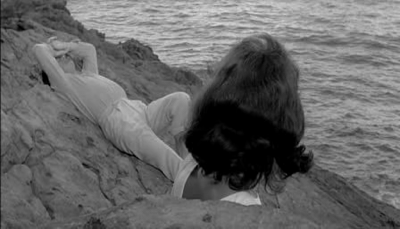
The introduction of many characters, and with them other plots, gives the sense that Anna’s presence was never the focus of the film. Even by the end of the film, the audience does not completely have a sense of who or what the film is centered around. That is because even though Anna does fill much of the content and continues to be a central-conflict after her disappearance, her existence is to serve the purpose of disappearance. Anna’s character has an internal conflict with what she is expected to become in her own life’s future, in a way that is echoed structurally in the future of the film’s narrative. We expect that Anna would physically remain throughout the film, and that if she disappears she would eventually be found. Instead Anna is never found, and at the end the film becomes more about Claudia and Sandro’s relationship with themselves and each other. As a cinematic device, Anna stands in as a representation of ambiguity and isolation in modern life, as well as the resituating of morals in the modern world. Finally, Anna’s disappearance serves to conclude that Claudia and Sandro’s search for her results in the translation of fear and frustration into eroticism.
Accompanying this representation of modernity is also a layer of what Roger A. Salerno refers to as the culture of modernism:
While modernity is frequently viewed as a set of social characteristics that describe a particular way of life, or even an era reflecting such attributes, modernism … is more exclusively seen as a cultural movement … Modernism, as a movement in the arts, emerges from the influences of modernity.” [15]
In Antonioni’s work we find that the films contain both a modernist aesthetic, and are also about the culture of modernism and the period of modernity. We also find the relations between fragmentation-simulation, form-content and the ideality-reality dichotomy, as signifiers of the modern framework. In his analysis of the idealist-realist dichotomy, Robert Lyons describes Antonioni’s characters in L’Avventura as representations of the contrast between ideals and reality. “Throughout the film Antonioni virtually stereotypes certain characters within the ideality-reality framework to corroborate his point that the people in ??L’Avventura??’s reality have no appreciation for an ideality. They live in an ephemeral, mutuable and unnatural reality.” [16]
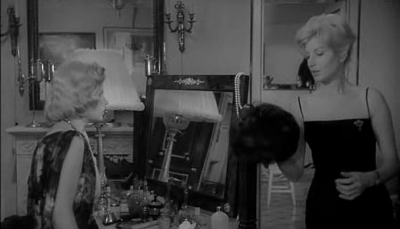
Antonioni uses characters as devices that deal with loneliness and isolation. These characters suffer from alienation solely to represent alienation. Antonioni does not explore the characters any further. That the characters have no depth is Antonioni’s dehumanization of them. They remain as they are without the use, for example, of epiphany that is common to classical narrative. This is also Antonioni’s aesthetic choice. In this sense, Antonioni is documenting alienation in modern reality. Yet these characters also represent a desire for a better, more ideal, reality. As viewers, we watch a struggle between characters who can easily change due to new circumstances, and others who become repressed by the changes being made. We watch the transformation of a social reality in the terms of modernist aesthetics.
The three films discussed in this essay reveal the dynamics surrounding the themes of the modern. The modern is treated not only as a social, technological, or political force but simultaneously also as an artistic and culturally aesthetic discourse. Themes of alienation, isolation, tradition, and technological modernization are represented not only through representing a “reality” of modernization as it is established through the situations where the stories take place, but also through the established conventions of classical narrative as discursively formulated situations that are also being explored, investigated, and made to be displayed to a critically aware audience. In these films we can see how issues of modernity cannot be separated from those of modernism. In being attentive to both aspects of the Modern, Antonioni’s films divulge the complexity of this period, revealing a modernity through the aesthetics of modernism, and a modernism through the realities of the modern.
Endnotes
1 Salerno, Roger A. Landscapes of Abandonment: Capitalism, Modernity and Estrangemnet. Albany: State University of New York Press, 2003, p.38.
2 Lunn, Eugene. Marxism and Modernism: An Historical Study of Lukács, Brecht, Benjamin, and Adorno. Berkley: University of California Press, 1982, pp.34-37.
3 Benjamin, Walter. “The Work of Art in the Age of Mechanical Reproduction.” Video Culture: A Critical Investigation. Ed. John Hanhardt. Layton, Utah: Gibbs M. Smith, Inc. 1986, p. 40.
4 Ibid.
5 Barthes, Roland. “Dear Antonioni…” L’Avventura: Michelangelo Antonioni, Director. Eds. Seymour Chatman and Guido Fink. London: Rutgers University Press, 1989. p.210
6 By colonial cinema I refer to films such as the Lumiere bothers footage of African cultures and Robert J, Flaherty’s Nanook of the North (1922), where the photographing of the subjects physical selves is at the center of interest. Clearly this has very little distinction from other kinds of cinema. All cinema have an interest in photographing the physical characteristics of its subjects. But, as will soon become apparent, for purposes of this essay the identification of colonial cinema is significant to understanding Antonioni’s film L’Eclisse.
7 Moore, Kevin Z. “Eclipsing the Commonplace: The Logic of Alienation in Antonioni’s Cinema.” Film Quarterly, v.48 (Summer 1995): 28.
8 Ibid, 29.
9 Ibid, 25.
10 Rifkin, Ned. Antonioni’s Visual Language. Ann Arbor, Michigan: UMI Research Press, 1982.
11 Trosman, Harry. Contemporary Psychoanalysis: and Masterworks of Art and Film. New York: New York University Press, 1996. p.132.
12 Moore, p.23.
13 Antonioni, Michelangelo. “A Talk With Michelangelo Antonioni.” Film Culture, n.24 (1962): 51.
14 Ford, Hamish. in Senses of Cinema: An Online Film Journal, Issue 28, Sept-Oct 2003, 7. Accessed June 2005. Antonioni’s L’Avventura and Deleuze’s Time-Image.
15 Salerno, Roger A. Landscapes of Abandonment: Capitalism, Modernity and Estrangemnet. Albany: State University of New York Press, 2003. p.38.
16 Lyons, Robert J. Michelangelo Antonioni’s Neo-Realism: A World View. New York: Arno Press, 1976. p.44.


